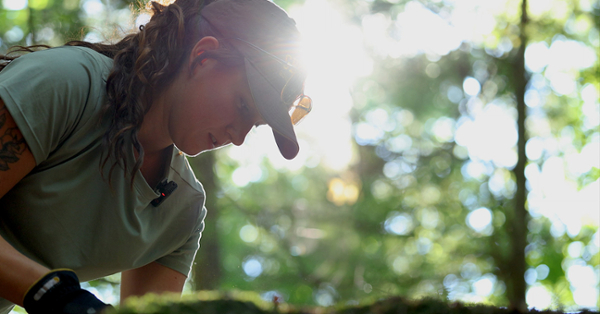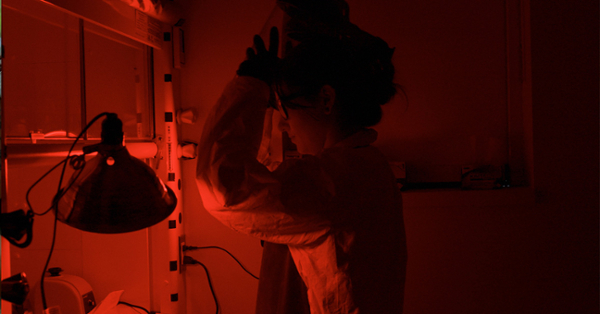A Rowan first: Ph.D. student journeys through ice, rock and time
A Rowan first: Ph.D. student journeys through ice, rock and time

Kelsey Barker is no stranger to breaking new ground—literally and figuratively. As the first Ph.D. student in Rowan University’s School of Earth & Environment, Barker is charting a path through ancient landscapes to better understand the future of the planet.
A 2022 Rowan graduate with a 3.8 GPA in geology, Barker returned in fall of 2023 to begin her doctoral studies in geology and aims to defend her dissertation by May 2027. Her research focuses on the Last Glacial Maximum (LGM), a period that ended roughly 20,000 years ago when massive ice sheets covered much of North America, Europe and Asia, and sea levels were about 400 feet lower than they are today.
“The past is the key to the present,” Barker said. “We are now experiencing rapid shifts in our climate. In order to understand what is happening today, we look to the geologic past.”
Her dissertation, “Investigating the timing and mechanisms of Laurentide Ice Sheet retreat from the northeastern United States,” seeks to refine an understanding of how and when that massive sheet melted away. The work may prove critical to improving natural hazard forecasting, sea-level rise projections and climate risk communication.
Barker’s fascination with geological processes began as an undergraduate, working with faculty in the Department of Geology, in which she studied a variety of topics.
Now edging nearer to completing her doctorate, Barker works closely with advisor Aaron Barth, Ph.D., whose work also focuses on rocky material deposited by massive ice structures in mountainous regions like the Adirondacks. Those deposits, called moraines, are far more common – and often more expansive – than most people would imagine.
“The Adirondacks are a highly variable topographic setting that was fully covered by the Laurentide Ice Sheet,” she explained.
Barker’s fieldwork involves collecting boulder and bedrock samples from glacially polished surfaces. Using tools like angle grinders, hammers, and chisels, Barker extracts samples to study in the lab. There, she isolates chlorine-36, a rare isotope formed when cosmic radiation interacts with surface minerals like calcium and potassium.
“Cosmic radiation comes in at such a high energy level that it splits apart atoms in the surface material of the earth,” Barker said. “Cosmic radiation is sourced from exploding stars, which interacts with the surface of the earth creating new, unique isotopes of elements on the planet."
Among them, chlorine-36 helps researchers determine how long a surface has been exposed to the atmosphere – essentially dating the ice sheet’s retreat.
“Ice sheets are highly erosive and should remove formerly accumulated nuclides,” Barker said. “The concentration of nuclides within the rock surface represents the last deglaciation.”
Her research not only contributes to a collective understanding of ancient climate shifts but will inform how humankind prepares for future changes.
“We’re already seeing impacts from climate change – forest fires, hurricanes, rising temperatures,” she said. “In my opinion, we’re not trying to avoid climate change anymore, we’re trying to prepare for it.
A New Jersey native, Barker began her academic journey as an education major before discovering her passion for geology. Now, she seeks to become a professor and inspire future geoscientists.
Her advice to others: “Find something you love to do and put everything into it,” she said. “If you work hard, you can accomplish anything.”


